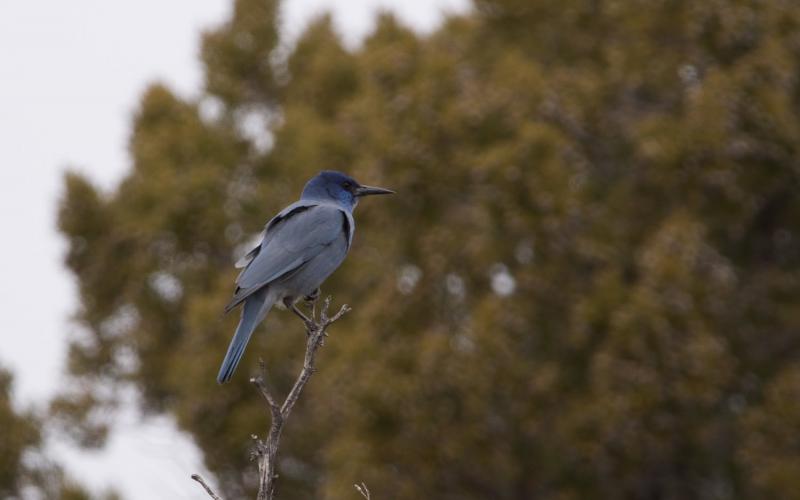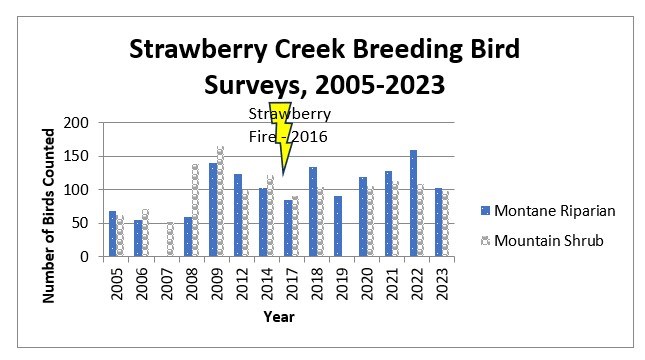Birds after Fire

The montane riparian habitat, which consists of the riparian corridor and species such as water birch, willow, aspen, and Woods rose along with surrounding pinyon pine and Utah juniper, had burned habitat in all 10 of the survey sites. The mountain shrub, with sagebrush, a variety of flowers and grasses, and near white fir and mahogany, had about five sites burned in the fire, while the upper half was outside the burned area.
Each survey is completed during June and consists of 10 locations, each spaced at least 250 m from each other. At each location, all birds seen or heard within 10 minutes are recorded according to protocols developed by the Great Basin Bird Observatory. The surveys start at sunrise and finish no later than 10 a.m.

Graph of breeding surveys in Strawberry Creek from 2005 to 2023. Two surveys were conducted, montane riparian (shown in solid blue) and mountain shrub (shown in hatched gray). The Strawberry Creek fire occurred in 2016, so about half the surveys were done before the fire and half after the fire.
Preliminary results show that the average number of birds counted during the survey per year pre-fire (2005-2014) for six surveys done in montane riparian habitat was 92. Post-fire (2017-2023), the number of birds per year in this same habitat rose to 117. The mountain shrub habitat showed nearly the same number of birds per year pre-fire (102) compared to post-fire (104).
The number of birds is one way to look at the results. Another way is to look at what happened to specific bird species.
In the montane riparian habitat, bird species that stayed stable pre- and post-fire included yellow-rumped warbler and yellow warbler. The species that decreased post-fire were mountain chickadee, ruby-crowned kinglet, and warbling vireo, all birds that tend to like to be higher in the tree canopy. The species that increased post-fire were American robin, broad-tailed hummingbird, hairy woodpecker, house wren, lazuli bunting, violet-green swallow, and western wood-pewee.
In the mountain shrub habitat, species that were common both pre- and post-fire included American robin, chipping sparrow, green-tailed towhee, ruby-crowned kinglet, vesper sparrow, and warbling vireo. Species that decreased post-fire were Brewer’s sparrow and sage sparrow. Species that increased post-fire were hermit thrush, northern flicker, and western meadowlark.
With this preliminary data analysis, overall, it appears that there have been slight shifts in species composition. The montane riparian habitat has experienced a larger shift than the mountain shrub habitat. Breeding bird surveys continue as well as additional data analysis.
Article by Gretchen Baker, Great Basin National Park Ecologist
Photo: Pinyon Jay, Great Basin Bird Observatory
